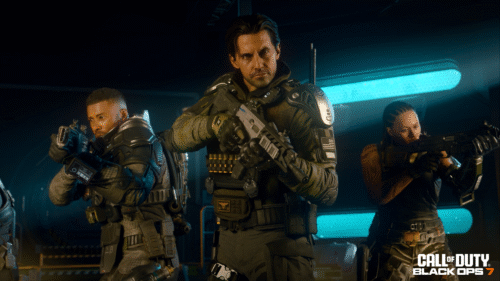It’s been 14 years since a “Prince of Persia” game was released, and it really felt like this series, which goes all the way back to 1989, was probably done. Of course, the awful 2010 Jake Gyllenhaal didn’t help a reputation that can’t be too strong for the current young generation of gamers. And mediocre trailers and delays for “Prince of Persia: The Lost Crown” didn’t leave most players with a ton of hope. So who could have guessed that this would be a wonderful start to the 2024 gaming year, a truly clever and addictive Metroidvania revamp of the franchise with strong animation, level design, and gameplay. The storytelling is a little shallow, but this title reminded me so much of games I loved from the classics like “Castlevania” to my more recent addiction to “Dead Cells.” It’s a game that’s truly difficult to stop playing, granting your character new powers and abilities at such a well-timed clip that you just want to keep going until you’ve found them all. That will take only about 20 hours, but almost all of them rock.
In “The Lost Crown,” you take the role of Sargon, a member of a Persian clan known as The Immortals. Sargon personally defeats a Kushan general trying to invade the Persian Empire, but a prince named Ghassan is kidnapped. (Yeah, believe it or not, you’re not actually the title character if you think about it.) A betrayer named General Anahita plans to use the prince’s blood to access the temple of Simurgh to obtain absolute power. It’s clearly a game that was heavily inspired by Persian mythology, using its imagery, mythology, and legends in a way that we haven’t really seen before. Designed by the brilliant people at Ubisoft Montpelier—they made those awesome “Rayman” games, at least one of which is on my platformer Mt. Rushmore—“The Lost Crown” embeds these ideas into addictive gameplay that, like other “Persia” games, plays with time and superpowers.

At first, “The Lost Crown” is a deceptively simple game. You have two swords to swing in light and heavy attacks. You’ll soon get a bow to help out with airborne enemies. Jumping, sliding, dashing—it’s all your standard Metroidvania stuff. (For those unfamiliar, that’s the genre name for side-scrolling adventure titles inspired by the classics “Metroid” and “Castlevania.”) What really works about “The Lost Crown” is how it builds on each new block of gameplay action. Like a lot of Metroidvanias, it contains a massive map with regions that can’t be reached until you find the right power to do so—jump higher, teleport, grab something with a lasso, etc. And so you’re constantly backtracking through this world, reaching new sections to either advance the story or find its secrets.
You’re also facing new enemies that require you to unleash those new powers. I know I’m getting older, but some of the bosses here are remarkably difficult, requiring carefully timed deployment of dash, jumping, dodging, parrying and attacking. Of course, like any action game, you will have the ability to upgrade weapons and abilities, but most of the customization there comes in the form of amulets found throughout the world that tweak your loadout—a bit more health, attacking power, etc. At higher difficulty levels, you’ll even have to swap out amulets depending on what’s needed for that specific challenge or boss battle you’re facing.
It all makes for a game that balances consistent gameplay in a way that makes the player feel like they’re learning and improving, but also keeps refreshing it. It’s like building new floors on the gaming house, expanding and growing in a way that keeps the design and story flowing. And it has a map that keeps growing and revealing itself, encouraging exploration in a way that’s addictive.
There are a lot of dead platforming franchises that once flourished on the market. I’d love a new “Rayman” game and dream of the day that “Castlevania” gets a proper next-gen release. If either get off the ground, they should look at “Prince of Persia: The Lost Crown” for an example of how to do it well.
The Publisher provided a review copy of this title. It is now available for Xbox, PS5, Nintendo Switch, and PC.












